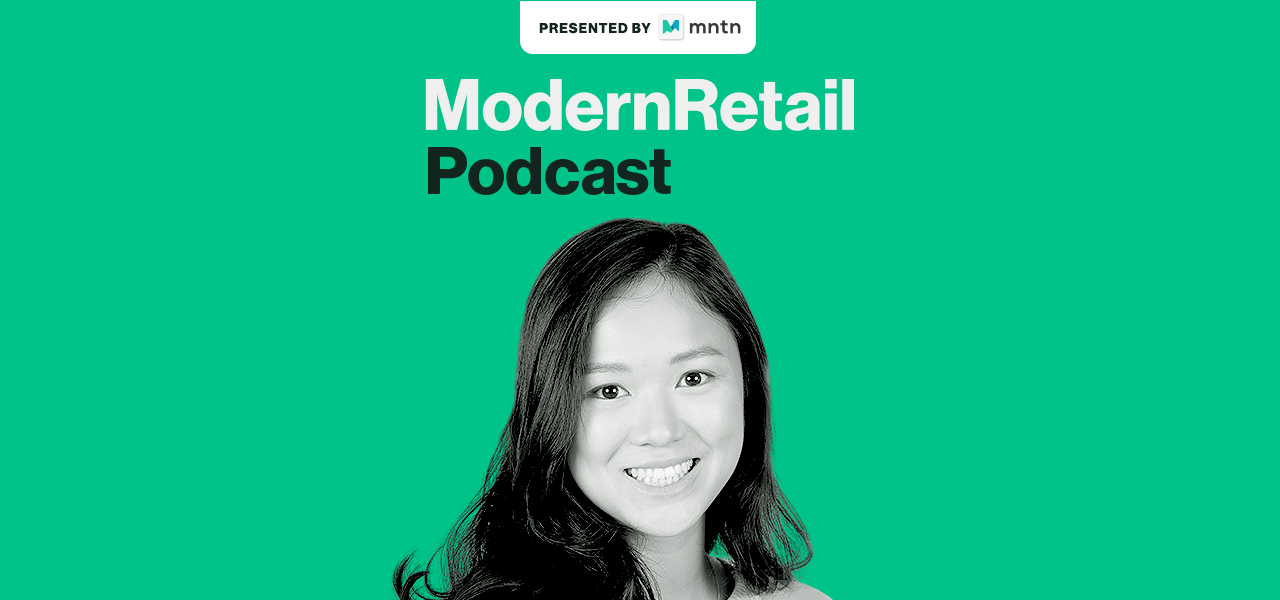Umamicart’s Andrea Xu on building an online Asian grocery startup

Subscribe: Apple Podcasts | Stitcher | Google Play | Spotify | RSS
Umamicart is trying to bring authentic Asian grocery items to more U.S. consumers.
The app launched in early 2021 and, according to co-founder and CEO Andrea Xu, has been seeing double-digit growth month-over-month. It offers Asian products from sauces to meats to vegetables, growing from 400 SKUs at launch to now over 1,000. Xu joined the Modern Retail Podcast this week and spoke about the trials and tribulations of growing a digital grocery startup.
According to Xu, Umamicart began because of a gap she saw in the market. Namely, for many people it’s hard to find Asian-specific grocery items beyond specialized grocery stores that are usually in specific, often metropolitan areas. “If you’re lucky enough that you’re near an awesome Chinatown, that’s super great,” said Xu. “But not everybody has that.”
So, the idea with Umamicart is to bring those types of products to more people. Currently, it is available in 11 states — with plans for more expansion following a $6 million fundraise that closed in December.
But the concept isn’t to just bring a large Asian grocery store online. Instead, Xu and her co-founder have been working to partner with small- to medium-sized Asian brands and suppliers to give them another channel to sell their products.
“People ask me a lot: ‘why can’t I buy this at Whole Foods?'” said Xu. “I’m like, well, Whole Foods is not working with the number of suppliers that we’re working [with].”
Ad position: web_incontent_pos1
Now, the focus is on expansion — both geographically and product-wise. “We’re probably going to at least double our catalog within the next few months,” said Xu.”Geographically, we also plan to expand. I’m not sure exactly to which exact locations, but we’re definitely going to be expanding this year.”
Here are a few highlights from the conversation, which have been lightly edited for clarity.
Umamicart’s target customer
“Where we saw the pain point was that the customer we’re serving is a modern customer that purchases online a lot; the way they consume food is not the same way that my parents would consume it. My parents might only cook with Chinese products, but these customers were engaging with many different types of Asian cuisines. They were mixing and matching. They were using Asian sauces on traditional non-Asian recipes — like Italian recipes. And I think there are awesome founders — Asian American founders — that have done a really good job of pushing this thing that people were already doing, but putting it on the forefront; you can put chili oil on pizza or you can even put in ice cream. And that was super exciting to me. So it was very clear from the start that we needed to not just focus on one cuisine, but rather on several cuisines at the same time.”
On sourcing the right suppliers and products
“I think it’s really important to work with suppliers that can ensure quality. We have done a lot of research and talked to so many suppliers and explored relationships with so many suppliers. I think it’s really important to make that more long-term decision of quality over price. Because, at the end of the day — for groceries — I think convenience and access is very important, but the underlying quality… that’s ultimately what the customers are going to care about. [That’s] what’s going to bring them back. For us, that’s kind of our gateway.”
How it grew by word of mouth
“I found the Asian American creator community and founder community to be extremely supportive. I was literally cold reaching out to people, DMing people and asking if they’d be willing to chat and give me advice and feedback. And some of our best connections came through the customer research. I would just ask friends — hey, I’m starting this concept, it’s called Umamicart… I want to get as much feedback as I can. And people would [say], okay, send me a survey [and] they would send it into their group chats. That way, we built our initial list of hundreds of people that we could talk to. And as I talked to these people, these people were like: I’m a writer at whichever publication, I actually have three friends that would probably be really good resources for you. And we just pulled that thread. It was very organic.”

